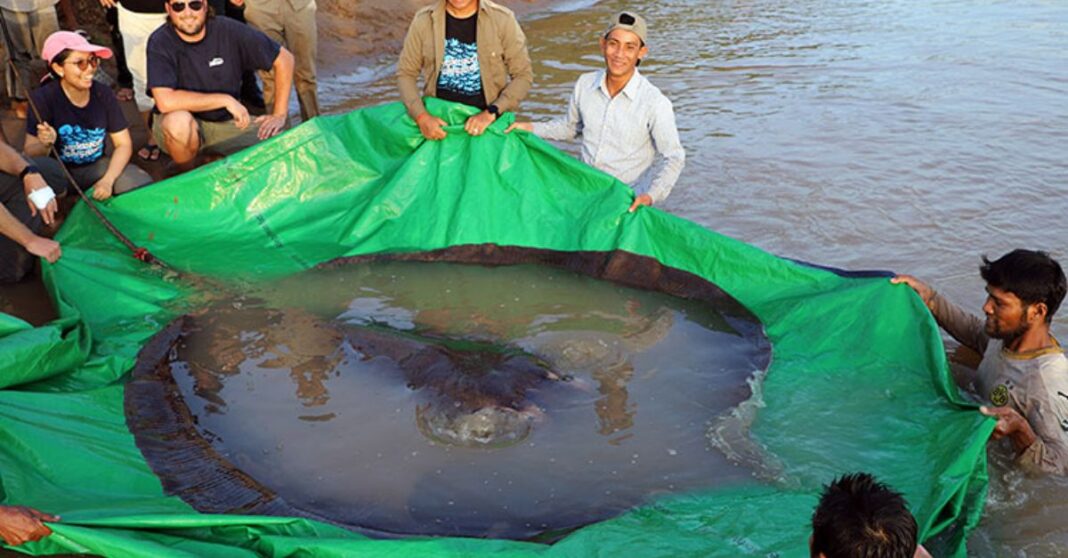After its capture and release In 2022, a tag placed on the giant stingray (Urogymnus polylepis) which measured four meters long, reveals unprecedented information on its movements and habitat in the Mekong River.
The giant freshwater stingray was captured in the Mekong River on 5 May, 2022 in Cambodia’s northern province of Stung Treng. Weighing in at 180-kilograms, the ray was accidentally caught by a fisherman in a small island community in the middle of the Mekong.
Upon receiving the call from a local fisherman about the catch on a full moon late into the night, project manager of the Wonders of The Mekong initiative, which is funded by USAID, Seila Chea, tagged the freshwater creature and promptly named it Boramy (meaning “full moon” in Khmer).
Now, one year later, the team have gained insight into its movements, which led the team along with the Joint Environmental Monitoring Program of the Mekong River Commission, to tag nearly 300 more fish from 27 species in Cambodia and Laos, as reported in the journal, Water.
“It’s vital research,” says Jake Brunner, head of the Lower Mekong Sub-Region for the International Union for Conservation of Nature.
“It leaves me more optimistic that the incredible concentration of fish diversity in the Mekong can be saved.”
The tagged giant freshwater stingray was detected across multiple acoustic receivers, showing researchers that the stingray only moves across a small proximity of approximately 7.5 km. The tag also revealed the behavior of the species, which has previously only been understood through ecological knowledge.
The tag also provided the location of two other giant stingrays, weighing 180 kg and 143 kg, suggesting that the river in the northeastern part of Cambodia could retain a population of these rays and may provide a critical habitat for this species.
Until more individuals of varying sizes representing both sexes are tagged and tracked over longer periods of time, the potential impacts of river fragmentation caused by dam construction on stingray movement will remain unclear.
“This new information about the stingray and other critically endangered fish is crucial to the protection of Cambodia’s most iconic animals and the preservation of a river that provides food and livelihoods for millions of people,” says Zeb Hogan, a biology professor at the University of Nevada, Reno, who leads the USAID-funded Wonders of the Mekong research project that initiated the study.
However, the damming of the river would undoubtedly result in altered sediment and flow regimes, loss of suitable habitat, and fragmentation of the population, likely leading to reductions in genetic diversity and population abundance, a report from the journal Water on MDPI said.
World Wide Fund for Nature Cambodia (WWF-Cambodia) said the giant stingray is the largest and heaviest species of freshwater fish in the world.



